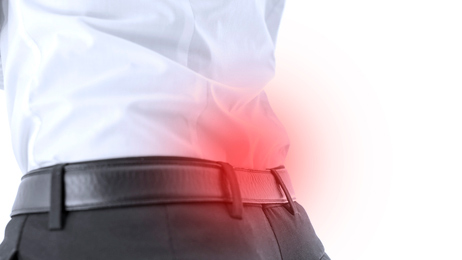
There are dangers in everyday life, from slipping in the shower to getting mowed down by the next door neighbor’s teenage driver. The risk doesn’t end once we are safely behind our desks, because of poor ergonomics … sitting is killing us!
Seriously, while not really trying to commit murder, our computer, desk, office chair and keyboard are not our friends. We spend hours each day sitting, typing, staring at the computer screen, and this inactivity is wreaking havoc on our health in a variety of ways.
First, most of us sit incorrectly
Goldilocks knew what she was doing when it came to carefully selecting the right chair. Most of us cause excess stress and pressure on our neck, shoulders, and back from the way we sit in our inadequate office chairs.
According to OSHA, a person who spends time at their computer needs to choose an adjustable chair that supports the back, buttocks, legs and arms. Be mindful of your posture throughout the day as well. An ergonomically adjusted chair minimizes the occurrences of awkward, strained positions that frequently cause injury.
Along with the way we sit, our office jobs are killing us because…
We have our desks laid out wrong
Even with a great chair, a desk that is the wrong height can cause a person to repetitively move and bend awkwardly during the day and injure themselves. Anyone who sits behind a desk needs to make certain it is the right height to comfortably reach the computer keyboard and all pertinent supplies are within a comfortable reach. Add a foot rest to decrease the stress on the lower back. Ergonomically positioning a desk offers greater comfort and less stress on a person’s body.
We also type wrong
Using the keyboard incorrectly can cause a ton of painful medical conditions from neck and back issues to carpal tunnel syndrome. The keyboard should sit at elbow height. Reduce the strain on your hands by keeping them in as natural a position as possible, holding your wrists up even with the backs of your hands. Avoid banging the keys by typing softly, which alleviates the stress on your fingers.
A computer mouse should be situated close to the keyboard, and it’s essential to keep the hand in a neutral position when using it. Avoid resting your hand on the mouse for an extended period of time.
Not taking breaks
According to the Mayo Clinic, sitting for long periods of time is linked to a variety of serious medical conditions from obesity to high blood sugar and cholesterol levels. Sitting in the same position for hours can put pressure on and result in back and neck pain.
Break up sitting every 30 minutes by standing and walking around and stretching if possible. Even standing for a couple of minutes at a time lessens the impact of a sedentary job.
In addition to taking the initiative to build an ergonomic office space, choosing to participate in chiropractic care is a great way to help eliminate pain from back, shoulder, and neck strain. Chiropractic treatment involves adjusting the spine, along with other techniques, offering better alignment in particular and a stronger, healthier body in general. A long-term benefit of chiropractic care is a body that enjoys greater mobility and fewer aches and pains.
An ergonomic office setup is critical in maintaining good posture that minimizes strain and repetitive motion injuries. By investing in ergonomically tailored furniture and setting it up to suit your specific needs, you will lessen the harm an office job does to your body.
If you or a co-worker suffer from symptoms related to an improperly positioned workstation, give us a call. Dr. Ness can help get the symptoms under control as well as guide you toward a more healthier spine and working environment.
Dr. David Ness is a sports chiropractor practicing in NY since 1988, and New Paltz since 2002. Dr. Ness is the official chiropractor for the football team at United States Military Academy at West Point since 2015. Dr. Ness also provides chiropractic care at Marist College and Vassar College during the school year.




